Ever felt a wave of uncertainty while brewing your beer? Here’s an interesting fact: truly great beers are often born out of meticulous recipe formulation and precise calculations.
This comprehensive guide will equip you with the knowledge and tools to confidently brew better beer, allowing you to take control over every aspect– from malt milling to bottling processes.
Ready for flawless brew days ahead? Let’s dive in!
Key Takeaways
- Malt milling and mashing are important steps in brewing beer, as they extract the good stuff from the malt and contribute to taste and color.
- Filtering and lautering help remove debris and solids from the liquid during brewing, resulting in a clearer and smoother final product.
- Boiling is crucial for flavor extraction, sanitizing the wort, breaking down proteins, and removing unwanted compounds.
- Fermentation is when yeast converts sugars into alcohol and carbon dioxide. Temperature control is important for consistent flavor.
- Predicting bitterness helps you adjust hop additions to suit your taste preferences.
- Determining grain bill involves choosing different types of malted grains to achieve desired flavors, colors, and body in your beer recipe.
- Calculating strike water temperature ensures enzymes activate properly for starch conversion into fermentable sugars during mashing.
- Saccharification tests determine if enough sugar has been converted, adjusting brewing process accordingly for desired sweetness levels.
- Measuring extracts using a hydrometer helps track fermentation progress and calculate alcohol content accurately.
- Yeast propagation from cryo cultures saves timemoney by reusing yeast strains while ensuring healthy cultures for fermentation.
- Assessing yeast cell numberviability ensures optimal conditions for fermentation success.
- Batch fermentationbottling are final steps where fermented beer is transferred into bottles with added sugar to create carbonation.
- Small – scale fermentations allow brewers to test different ingredients or techniques before committing to full brews.
- Spectrophotometric measurements analyze color,bitternessoff – flavors in beer,directing adjustments towards preferred taste appearance.
- Key takeaways: Meticulous recipe formulation tools like calculators enable confident brewing.Temperature control,fine-tuning bitterness level through hops adjustment,reliable calculations of water temperature,sugar quantity yeast viability make better beers.Consistency,personalized tastes experimenting with new styles can all be achieved with these resources
Basics of Beer Recipe Formulation

The basics of beer recipe formulation include the processes of malt milling and mashing, filtering/lautering, boiling, and fermentation.
Malt milling and mashing process
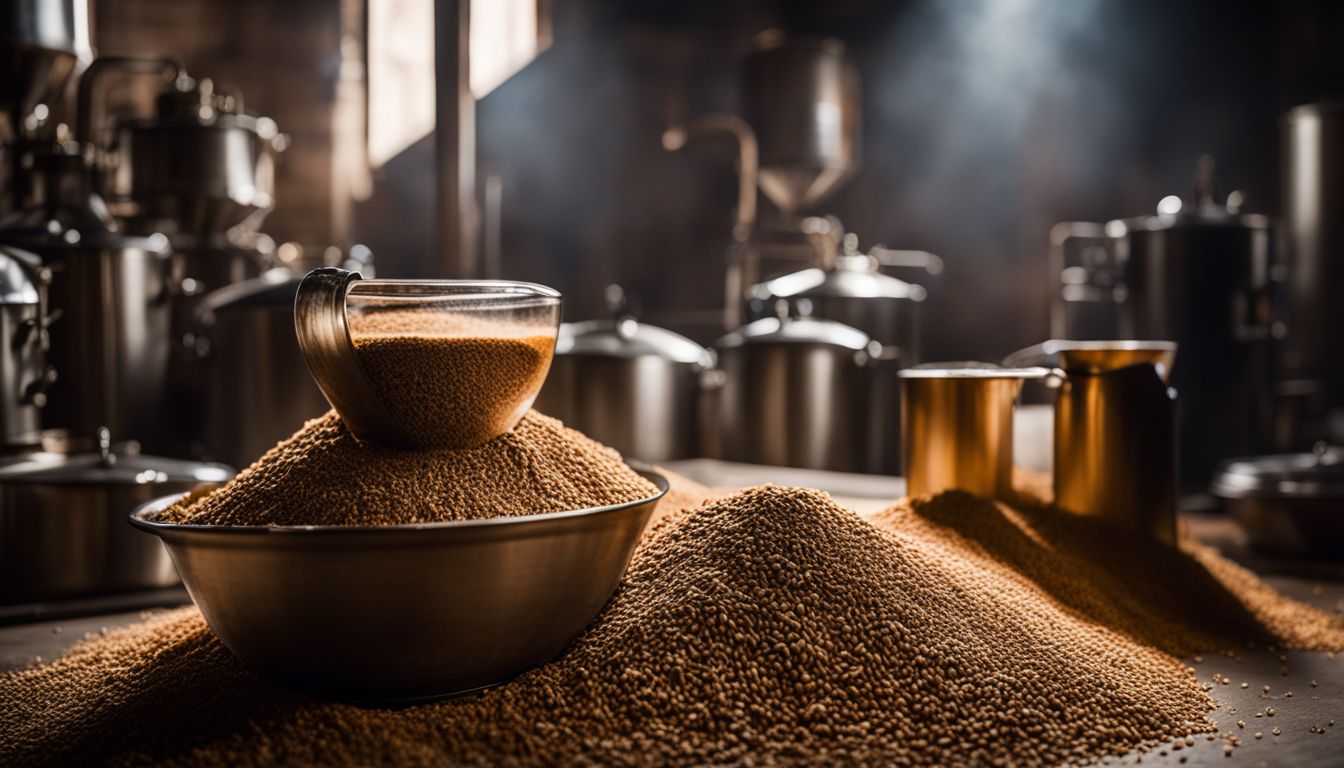 Malt milling breaks up the grain. We then mix it with hot water in a process known as mashing. This is how we get sweet liquid called wort from the malt. Mashing makes sure all the good stuff in the malt gets into our beer.
Malt milling breaks up the grain. We then mix it with hot water in a process known as mashing. This is how we get sweet liquid called wort from the malt. Mashing makes sure all the good stuff in the malt gets into our beer.
The better we mash, the more we can take from the malt. It’s an important step when brewing beer at home or in bigger places like breweries. Different types of beers need different kinds of malts, and this adds to their taste and color!
Filtering/lautering
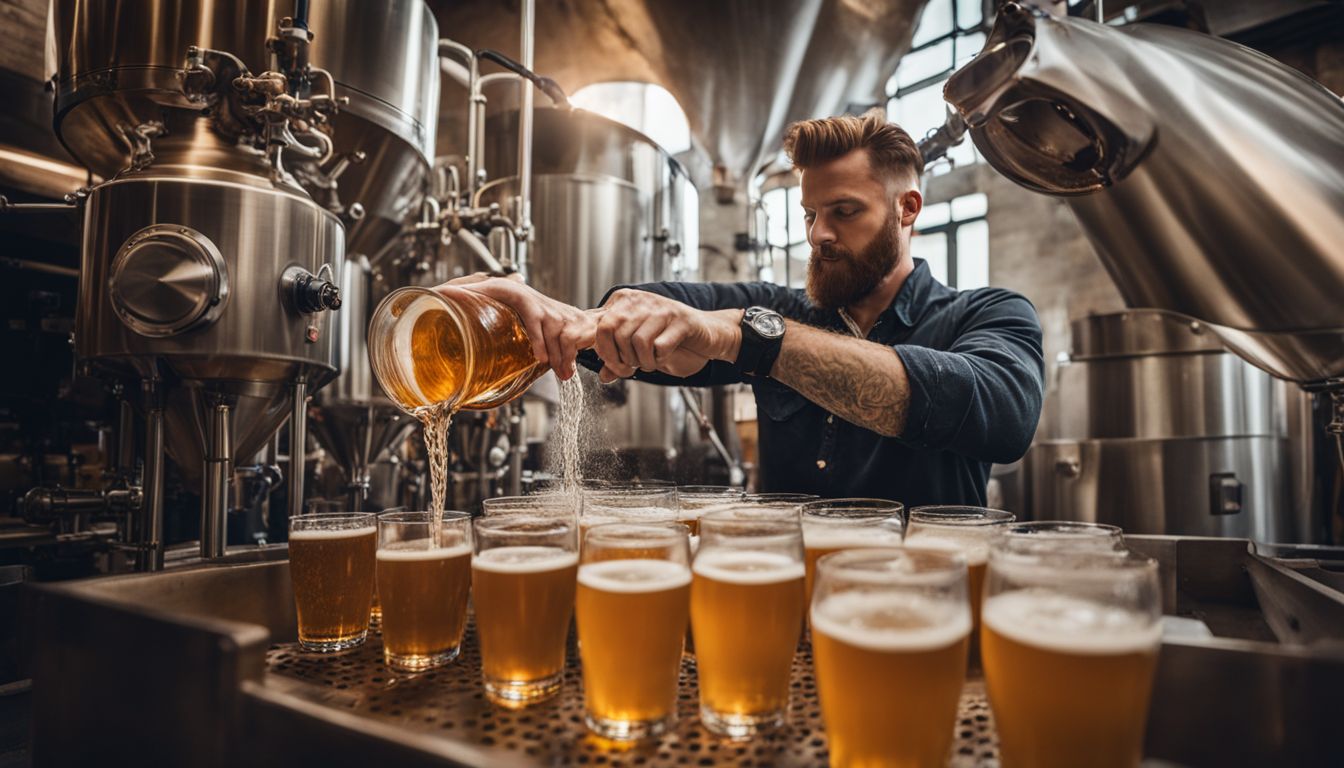
Filtering and lautering are important steps in the beer brewing process. After mashing and boiling, it’s time to separate the liquid from the grain and other solids. Filtering involves passing the liquid through a filter medium to remove any remaining debris or sediment.
This helps achieve clarity in the final beer product. Lautering is specifically focused on separating the sweet wort (the liquid extracted during mashing) from the spent grains. This allows brewers to collect only the desired liquid for further fermentation.
Proper filtering and lautering help ensure that your beer looks great and tastes smooth without any unwanted particles or flavors from the grains.
Boiling

During the brewing process, boiling plays a crucial role in creating delicious beer. Boiling helps to extract flavor from the malt and hops while also sanitizing the wort, which is the liquid extracted from mashing grains.
This step usually takes about 60-90 minutes and involves heating the wort to a rolling boil. Not only does boiling enhance the aroma and taste of your beer, but it also helps to break down proteins and remove any unwanted compounds.
So, when you’re brewing your next batch of beer, make sure you give this step the attention it deserves!
Fermentation
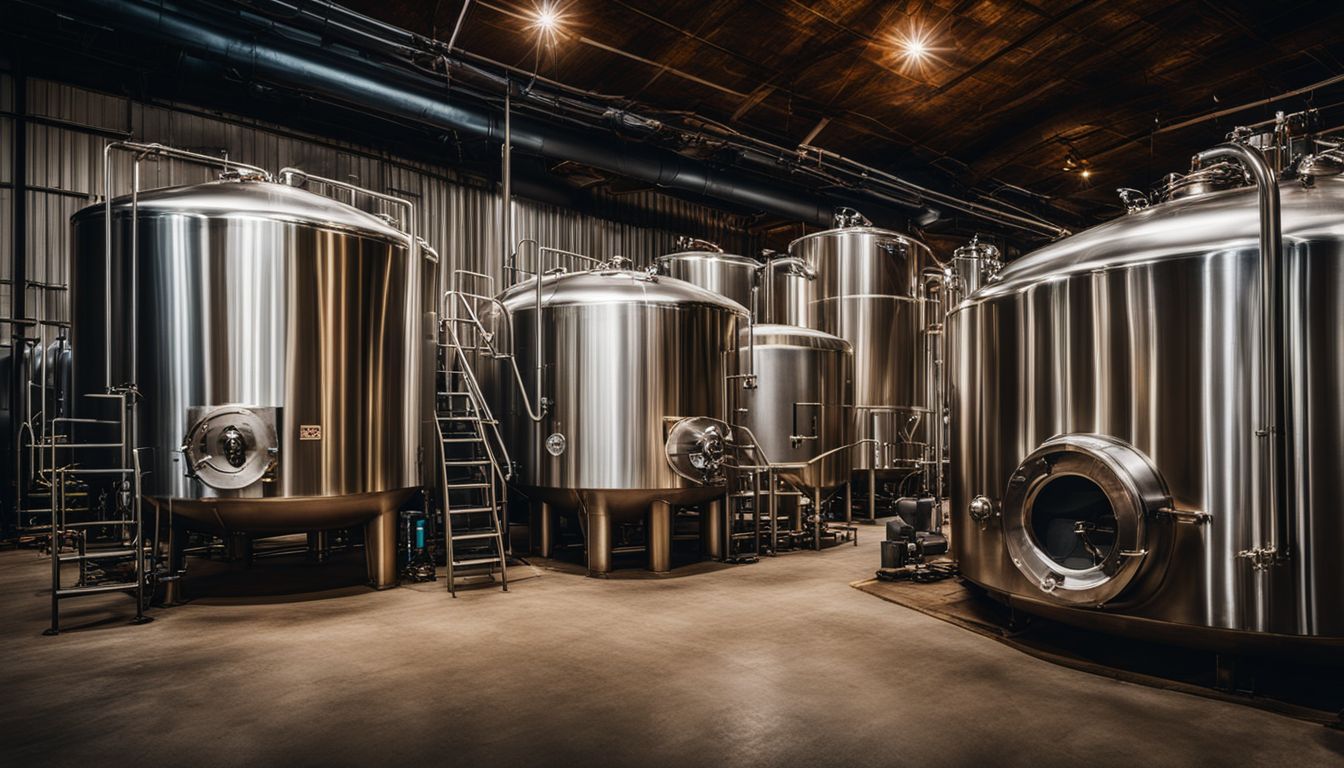
During fermentation, the magic happens. This is when yeast converts the sugars in the wort into alcohol and carbon dioxide, giving beer its delightful fizz and booze. It’s like a party for the yeast! Temperature control during fermentation is crucial to maintain consistency in flavor and prevent off-flavors from developing.
After fermentation, it’s time to bottle or keg your brew and let it carbonate. So sit back, relax, and let nature do its work as your beer transforms into a delicious beverage ready for enjoyment.
Cheers!
Calculating and Adjusting Beer Recipes
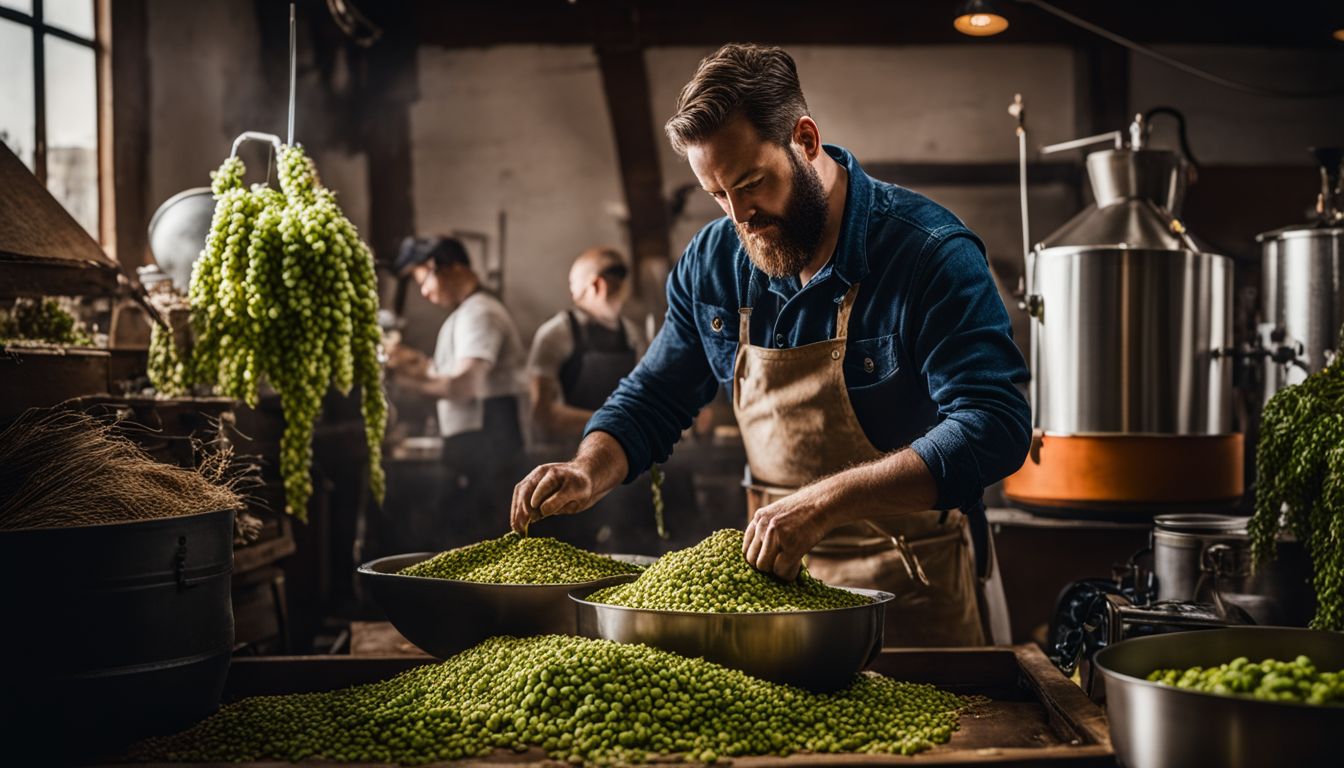
Learn how to predict bitterness, determine grain bill, calculate strike water temperature, and perform a saccharification test for perfect beer recipe formulation.
Predicting bitterness

To create a delicious beer, it’s important to be able to predict its bitterness. This is because the level of bitterness can greatly impact the flavor and enjoyment of your brew. By using brewing calculators and understanding the hop additions in your recipe, you can estimate how bitter your beer will be.
Factors such as hop variety, boil time, and quantity all play a role in determining bitterness. So if you want a more bitter beer, increase the hops or extend their boiling time. On the other hand, if you prefer less bitterness, reduce the amount of hops or shorten their boiling time.
With these tools and knowledge, you can craft beers that suit your taste preferences perfectly!
Determining grain bill

To determine the grain bill for your beer recipe, you need to consider factors like the desired flavor profile, style of beer, and target ABV (alcohol by volume). The grain bill is a combination of different types of malted grains that contribute to the color, taste, and body of the beer.
You can use brewing calculators or software to help you calculate the right amount of each grain based on their potential extract and your desired gravity measurements. This will ensure that you achieve the desired balance and character in your brew.
So don’t worry about guesswork – use these tools to confidently plan out your grain bill!
Calculating strike water temperature

To brew beer successfully, it’s important to calculate the strike water temperature accurately. This is the temperature at which you add hot water to your grains during the mashing process.
To calculate it, you need to consider factors like the desired mash temperature and the specific heat of your equipment. By getting this calculation right, you can ensure that enzymes in the malt are activated properly and starches are converted into fermentable sugars.
This will ultimately affect the flavor and body of your beer. So take your time with this step and use a reliable calculator or brewing software to help you get it right every time!
Saccharification test

To ensure that your beer turns out just right, it’s important to perform a saccharification test during the brewing process. This test helps determine if enough sugar has been converted into fermentable sugars by the malt.
It involves taking a small sample of the mash and adding iodine solution to see if it turns black or stays brownish. If it remains brownish, then there are still starches present that need more time to convert into sugars.
Performing this test allows you to adjust your brewing process accordingly, ensuring that you achieve the desired level of sweetness in your final product.
Measuring Extract and Yeast Propagation

To measure extract, use a hydrometer which measures the specific gravity of wort before and after fermentation to determine alcohol content. For yeast propagation, assess cell number and viability by counting cells under a microscope or using specialized software.
Extract measurement using a hydrometer
To measure the amount of sugar in your beer, you can use a handy tool called a hydrometer. It’s like a floating thermometer that tells you how dense or “heavy” the liquid is. The more sugar there is, the higher the reading on the hydrometer will be.
This measurement is important because it helps you calculate things like alcohol content and fermentation progress. By taking readings before and after fermentation, you can determine how much sugar has been converted into alcohol.
So if you’re brewing your own beer at home, make sure to have a hydrometer on hand to help you keep track of your brew’s progress!
Yeast propagation from cryo cultures
Yeast is a crucial ingredient in beer brewing, and propagating yeast from cryo cultures is an important step. This process involves reviving frozen yeast samples to create healthy and active cultures for fermentation.
By carefully thawing the cryo vials and using sterile techniques, brewers can ensure that the yeast cells are viable and ready to ferment sugars into alcohol. Yeast propagation from cryo cultures allows brewers to maintain consistency in their brews by using the same strain of yeast over multiple batches.
It also saves time and money compared to buying new yeast for each batch. So, if you’re looking to brew with confidence and produce consistent results, taking the time to propagate yeast from cryo cultures is well worth it.
Assessing yeast cell number and viability
To make sure your beer turns out just right, it’s important to assess the number and viability of yeast cells. This will help you determine if your yeast is healthy and how much to use for fermentation.
You can measure yeast cell number by using a microscope or a spectrophotometer, which measures the amount of light absorbed by the yeast sample. Viability testing involves staining the yeast cells with a special dye that only binds to living cells.
By assessing both cell number and viability, you can ensure that your yeast is in optimal condition for fermenting your beer and producing those delicious flavors we all love. So don’t skip this step – it’s crucial for brewing with confidence!
Fermentation and Bottling Processes
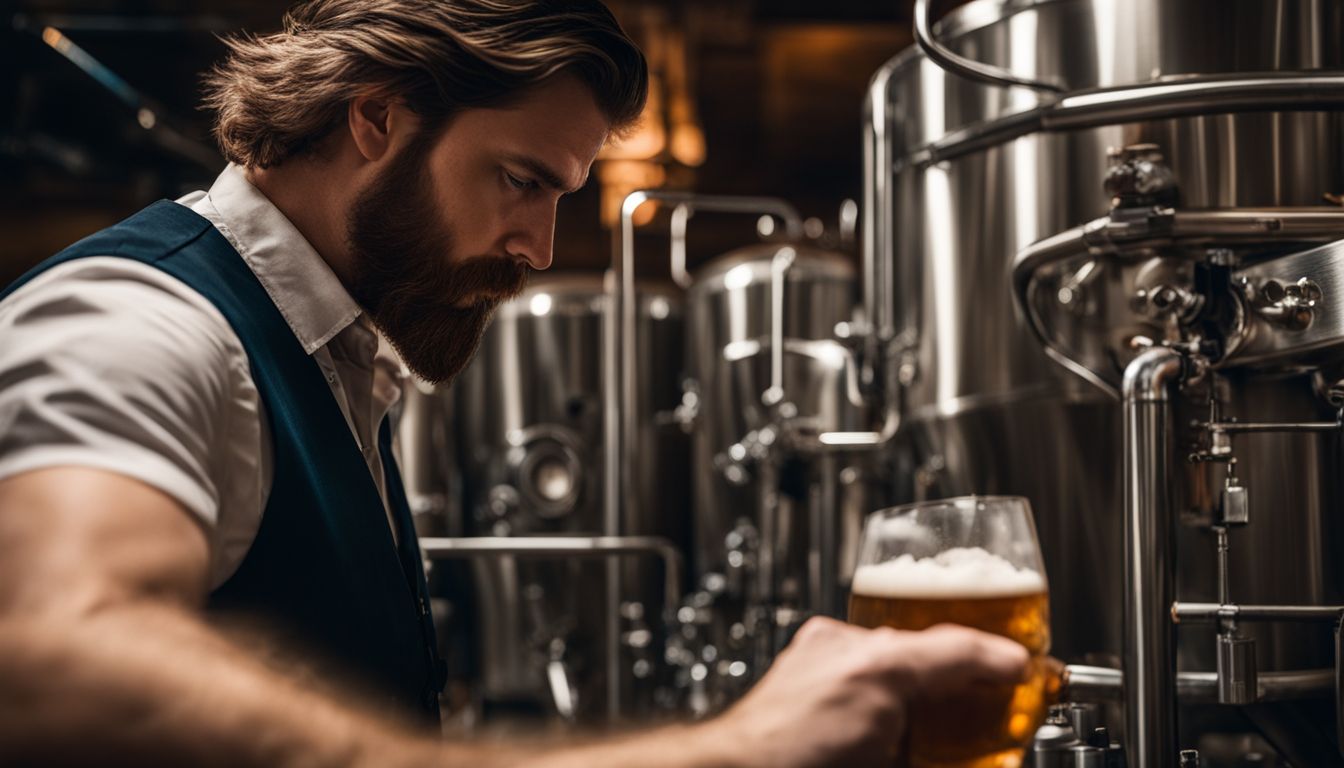
Batch fermentation and bottling are essential steps in the brewing process. By understanding and controlling these processes, brewers can ensure consistent quality in their beers. Learn more about the importance of small-scale fermentations, measuring spectrophotometric measurements for color, bitterness, and off-flavors, as well as troubleshooting common issues that may arise during fermentation.
Mastering these processes will help you produce delicious, high-quality beers every time.
Batch fermentation and bottling
Batch fermentation and bottling are the final steps in brewing your own beer. After the brewing process, where you mix all the ingredients together, it’s time to let the beer ferment.
This is when yeast eats up the sugars and turns them into alcohol. It usually takes a few weeks for this process to complete.
Once fermentation is done, it’s time to bottle your beer. You carefully transfer it from the big fermentation container into individual bottles. This can be done using a siphon or a bottling bucket with a spigot.
After that, you add some extra sugar to each bottle before putting on caps or using a capping machine. The added sugar will reactivate the yeast and create carbonation inside the sealed bottle.
Small-scale fermentations and sampling
During the brewing process, small-scale fermentations and sampling play a crucial role in ensuring the quality of your beer. By conducting small-scale fermentations, you can test different yeast strains, ingredients, or techniques before committing to a full brew.
This allows you to make adjustments and fine-tune your recipe to achieve the desired flavors and aromas. Sampling throughout fermentation also helps you monitor the progress of your beer, enabling you to detect any off-flavors or potential issues early on.
By taking these steps, you can ensure that your final product meets your standards and delivers a delicious drinking experience.
Spectrophotometric measurements for color, bitterness, and off-flavors
You can use spectrophotometric measurements to determine the color, bitterness, and off-flavors in your beer. This method uses light to analyze the characteristics of your brew. By measuring the wavelengths of light absorbed or transmitted by different compounds in your beer, you can get precise data on its color, bitterness, and any off-flavors that may be present.
This information is crucial for ensuring consistency and quality in your brewing process. With spectrophotometric measurements, you can make informed adjustments to achieve the desired taste and appearance of your beer.
Troubleshooting and Understanding Results

Identifying critical parameters and resolving issues that may arise during the brewing process to gain a comprehensive understanding of results.
Critical parameters and troubleshooting
In beer brewing, there are critical parameters to keep in mind to ensure a successful brew. These include factors like mash temperature, hop additions, yeast pitch rates, and water chemistry.
Monitoring and adjusting these parameters throughout the brewing process is important for achieving desired results. Troubleshooting is also essential if any issues arise during fermentation or bottling.
By understanding common problems and their solutions, brewers can troubleshoot effectively and make necessary adjustments. Keeping an eye on critical parameters and knowing how to troubleshoot will help beer drinkers achieve consistent and high-quality brews every time they take on a new recipe.
Interpreting and understanding the results
Understanding the results of your beer brewing process is essential for improving and refining your recipes. By interpreting these results, you can identify any issues or areas for improvement.
For example, you can analyze the color, bitterness, and off-flavors using spectrophotometric measurements. Additionally, understanding critical parameters like gravity measurements and water chemistry will help you troubleshoot any problems that arise during fermentation.
By paying attention to these factors and making necessary adjustments, you can brew with confidence and create delicious beers that meet your desired specifications.

Are you an aspiring brewer looking to create your own signature beer recipes? Look no further! Our comprehensive guide to beer recipe formulation and calculators will help you brew with confidence.
We’ll cover the basics of formulating a beer recipe, including the malt milling and mashing process, filtering/lautering, boiling, and fermentation. You’ll also learn how to calculate and adjust your recipes, from predicting bitterness to determining the grain bill.
We’ll even show you how to measure extract and propagate yeast for optimal fermentation. Plus, we’ll delve into troubleshooting any issues that may arise during the brewing process.
With our easy-to-use beer recipe calculator and designer, guesswork will be eliminated on your brew day so that you can focus on creating delicious beers tailored to your taste. So grab a pint glass and get ready to dive into the world of brewing with confidence!

The outlines provided have condensed and restructured the information to create a simple guide on beer recipe formulation and calculators. It covers the basics of brewing, calculating and adjusting recipes, measuring extract and yeast propagation, fermentation processes, troubleshooting, and understanding results.
The aim is to help beer drinkers brew with confidence by eliminating guesswork and providing easy-to-use calculators. These outlines also emphasize the importance of yeast in brewing and provide protocols for yeast propagation in a lab environment.
Additionally, it mentions collaborations between breweries to enhance beer recipes. Please note that there may be more information in the unstructured outlines than what is presented here.
Conclusion
In conclusion, with the help of beer recipe formulation and calculators, brewers can confidently create their own signature beer recipes. By eliminating guesswork and providing accurate calculations, these tools make brew day easier and more successful.
Whether you’re a homebrewer or a commercial brewery, using these resources will enhance your brewing process and allow you to experiment with different styles and flavors. Cheers to brewing with confidence!
FAQs
1. How do I formulate a beer recipe?
To formulate a beer recipe, you need to choose your desired beer style, select appropriate ingredients such as malt, hops, and yeast, and determine the quantities for each ingredient based on the desired characteristics of your beer.
2. What role do calculators play in brewing beer?
Calculators are useful tools in brewing as they help with calculating important parameters such as target gravity, bitterness levels (IBUs), alcohol content (ABV), and even estimating color. They provide guidance and ensure accuracy in the brewing process.
3. Can I use this guide if I am a beginner brewer?
Yes, this comprehensive guide is suitable for beginner brewers as it provides step-by-step instructions and explanations of key concepts. It will help build your confidence in formulating recipes and using calculators effectively.
4. Are there any safety precautions to consider when brewing beer?
Yes, it’s important to follow good hygiene practices while handling ingredients and equipment during the brewing process to prevent contamination. Additionally, proper sanitation of all equipment is crucial to avoid any unwanted flavors or spoilage in your final product.
